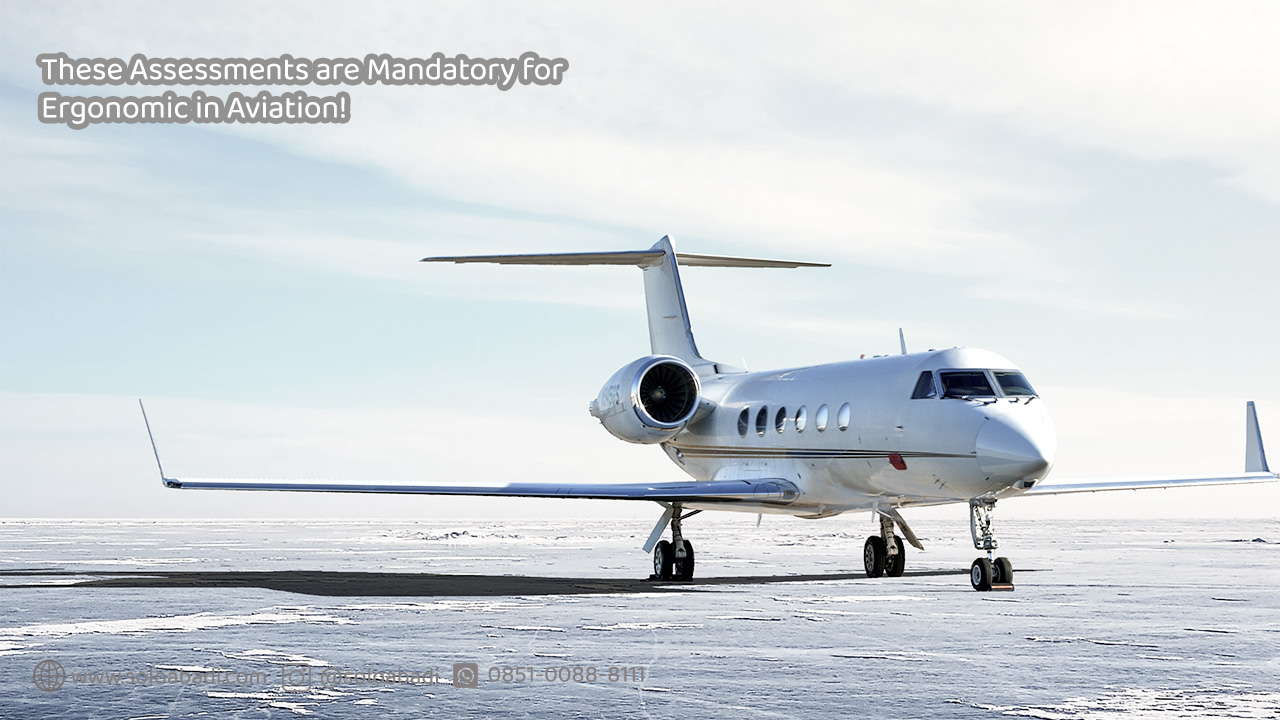Ergonomic in aviation is a crucial factor. Therefore, anthropometry can determine aspects of aircraft comfort, accessibility and safety or what is known as the OHS (Occupational Health and Safety) actor. Thus, valid anthropometric data needs to be collected before it is used to design various tools and support spaces on aircraft. We summarize it in 3 assessments that are mandatory for ergonomic in aviation.
Why is Ergonomics in Aviation Important?
Before understanding the applications, it is important for us to understand the meaning of ergonomics and anthropometry. Ergonomics is the norm in doing a job in order to achieve comfort, safety and work safety. Meanwhile, Anthropometry is the science of the dimensions of the human body.
The relationship between anthropometry and ergonomics is that anthropometry collects measurements of the dimensions of the human body that are used to design work tools that are in accordance with work norms. Both are interrelated to create a comfortable, safe work space and tools and achieve work safety.
Ergonomic aircraft design not only increases comfort for passengers, but improves accessibility for pilots. This proves that flying an airplane does not only depend on embedded smart technology, but also relies on the expertise and decisions made by the pilot. So what if the pilot is tired and still has to follow the parameters and buttons scattered in the cockpit?
Therefore, in this article, we will discuss 3 aspects of ergonomics in airplanes that you can meet!
1. Ergonomic Cockpit Design
According to Andreass Titlebach in his work Pilot Fatigue, states that fatigue in massive pilots is found in various countries. In fact, in Germany, 4 out of 5 pilots experience work fatigue due to non-ergonomic cockpit designs.
Head of the Community Service Team from the Department of Community Medicine FKUI, Dr. dr. Retno Asti Werdhani MEpid, pilot profession is prone to fatigue. As a result, pilots often fly over the limit. They also being in a sedentary position or sit for long periods of time. Therefor, the ergonomic cockpit design plays a major role in the level of flight safety.
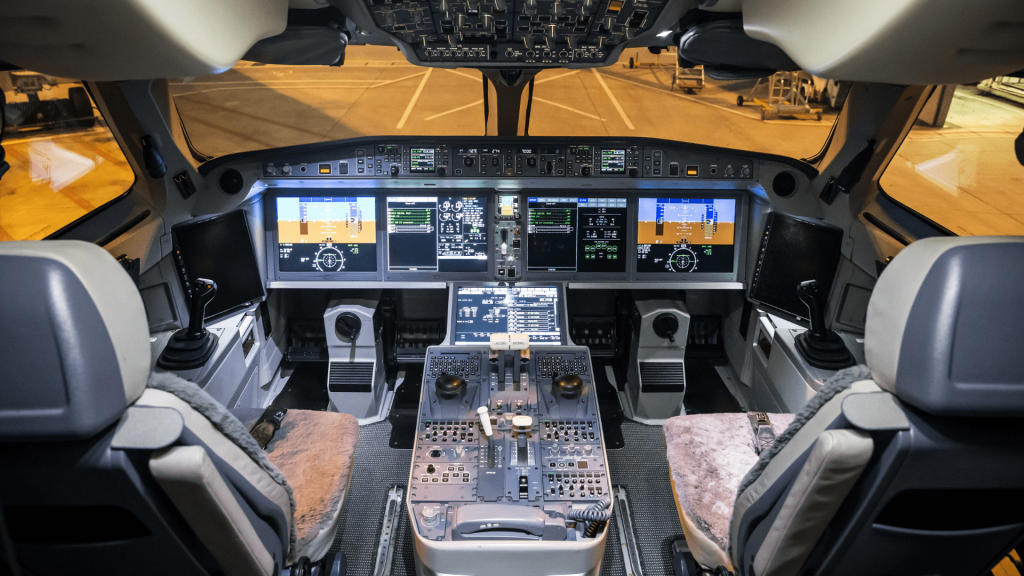
In addition, it should be underlined that European and Asian human body sizes are clearly different. Meanwhile, many Asian countries have purchased commercial aircraft from countries in Europe. Therefore, an ergonomic approach by taking anthropometric measurements needs to be carried out by analyzing pilot posture or Pilot Posture Analysis, conducting pilot activity simulations or Pilot Load Activity Simulation and pilot work load analysis or Pilot Load Analysis.
The anthropometric standards that need to be measured to obtain an ergonomic cockpit design are:
- Height
- Weight
- Hand Reach (the ability to reach the upper and middle panels)
- Leg Readh ( the ability to reach ruddle pedals)
- Eye Height While Sitting
2. Ergonomic Passenger Seat
Being one of the mainstay fleets of various groups makes airplane ticket prices vary, even routes with the lowest prices are one of the choices. However, studies prove that low prices affect the comfort of the cabin and passenger seats. Although, the airline claims to have adjusted national flight standards.
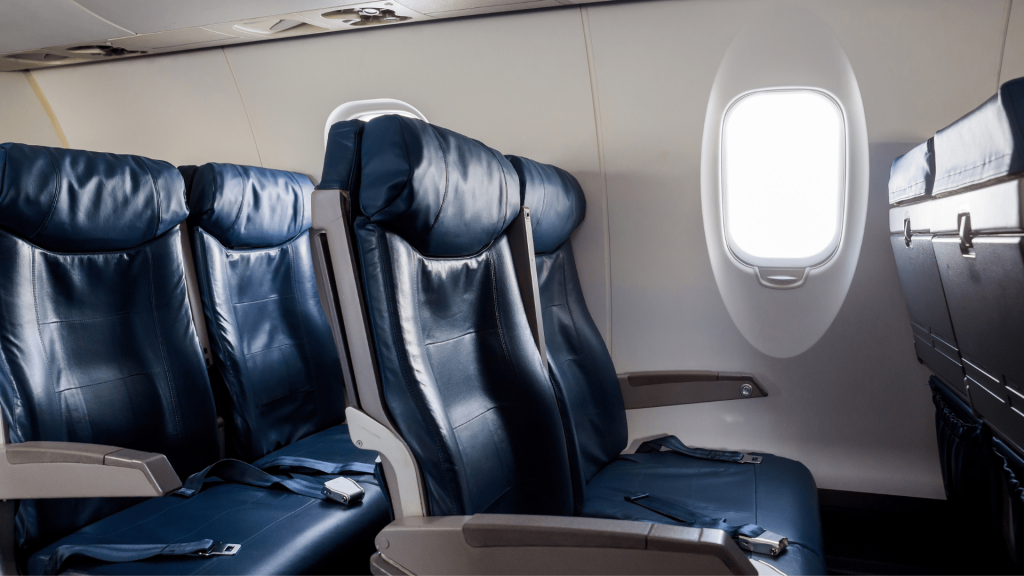
Ergonomics can be created in the form of comfort and emotional attitude. Therefor, it requires a design that fits the dimensions of the human body. Based on the findings of Negin Ozve Aminian and Fairuz Izzudin Romli, the required anthropometric parameters for passenger seat designs are :
- Seat Height with Popliteal Height Measurement
- Seat Width with Hip Breadth Measurement
- Armrest Height with Buttock Popliteal Length Measurement
- Armrest Width with Elbow Rest Height Measurement
- Armrest Length with Forearm Width
- Measurement Distance Between Armrests (Width Between Armrests) with Elbow to Elbow Breadth
- Measurement Seat Pitch (Width Between Seats) Backrest Height with Shouldre and Acromial Height
- Measurements Backrest Width with Shoulder Breadth Measurement Backrest Lumbar Height (Distance from Sitting Surface to Waist) with Waist Height Measurement Headrest Height with Head Height
- Measurement Headrest Width with Head Breadth Measurement
3. Ergonomic Interior Cabin
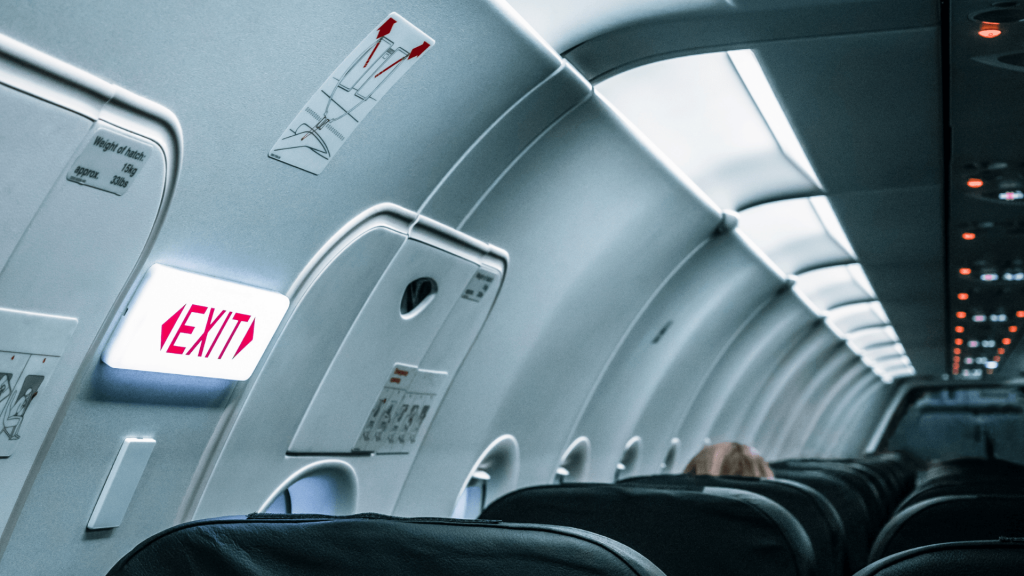
Cabin Interior is priority number one in terms of ergonomic features on board. Raher than accessibility and comfort, the interior of the cabin has an impact on security. This is because the cabin is not just an aisle containing hundreds of passenger seats, but every feature in the cabin has its own security function. You can see in the following picture:
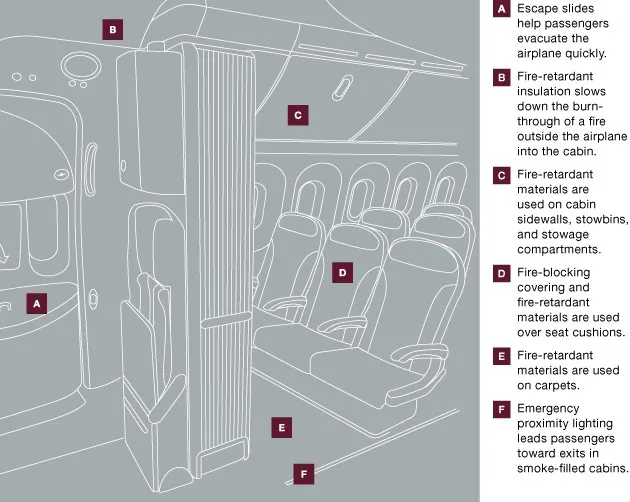
The cabin interior is designed to facilitate evacuation in an emergency, such as the escape slides used during emergency landings on water which are also fire resistant. The cabin crew only has 90 seconds to save the entire aircraft, therefore a cabin interior is needed that not only supports accessibility but also the mobility of passengers and aircraft crew.
These Instruments Help You Create Ergonomic in Aviation
Aircraft requires ergonomic in every aspects. Therefore, multidimensional studies such as anthropometry are needed to find the right dimensions for the various supporting instruments on the aircraft. So far there are only two tools to support ergonomic design in aviation, namely the Anthropometry Chair and the Portable Anthropometry.
1. Anthropometric Chair
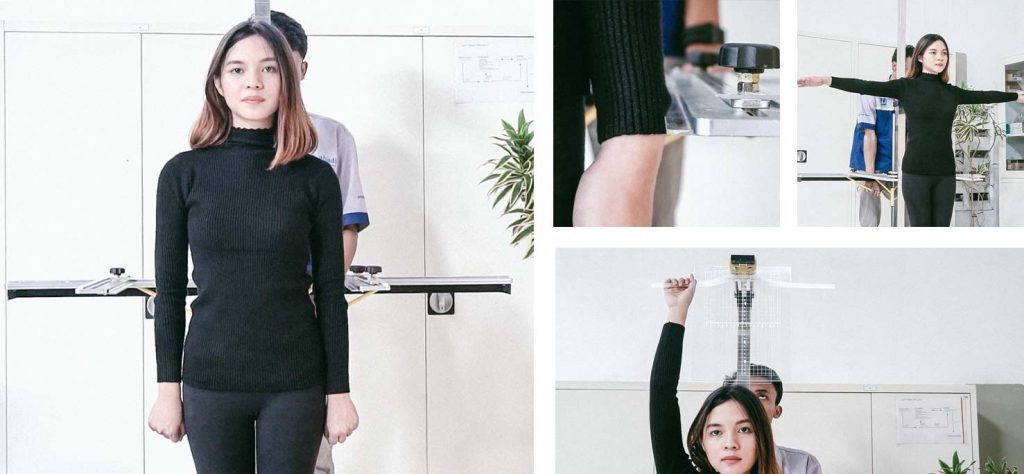
The Anthropometry Chair is one of the mandatory measuring tools in the world of aviation. The reason is, every chair design needs to go through measurements with Anthropometry Chairs. Anthropometric measuring instruments that can be used in 3 body positions, starting from sitting, standing and measuring faces, have been used in various educational institutions, aviation, to sports science.
Read More : The Uses and Functions of the Anthropometric Chair
2. Portable Anthropometry
Portable Anthropometry is the most widely used anthropometric measurement tool in the Ergonomics Laboratory. This instrument can be used to measure more than 100 dimensions of the human body in two working positions. The working position in humans itself consists of sitting and standing positions and facial ratios.
With the data generated by Portable Anthropometry, the industry can find out the environment and work support instruments that are in accordance with the workload so that occupational health and safety can be achieved. This data is then needed in conducting Ergonomics Research. With a design that is easy to carry anywhere, Portable Anthropometry can make it easier for the academic community to carry out field research.
Read More : Anthropometric Measuring Instruments and Their Functions in Ergonomic Studies
Portable Anthropometry is the best anthropometric measurement tool for conducting ergonomics research. Portable Anthropometry has 4 types of calipers, namely Sliding Caliper, Small Spreading Caliper, Large Spreading Caliper, Branches Measurement Curves and a set of Anthropometers. These five instruments can be used in various fields, from education, OSH, automotive, to aviation and the military. Ergonomics research needs can be facilitated by a portable anthropometric design that can be carried anywhere.
Get Anthropometric Measurement Tools For Aviation
Solo Abadi Indonesia fully supports the Government of Indonesia to create innovations and deepen ergonomics research and apply them to everyday life. As the private sector, we are always open to collaborating on ergonomics and anthropometric research to support a good ergonomics ecosystem in Indonesia.
Contact our admin for further consultation via WhatsApp and get more information via www.soloabadi.com.

